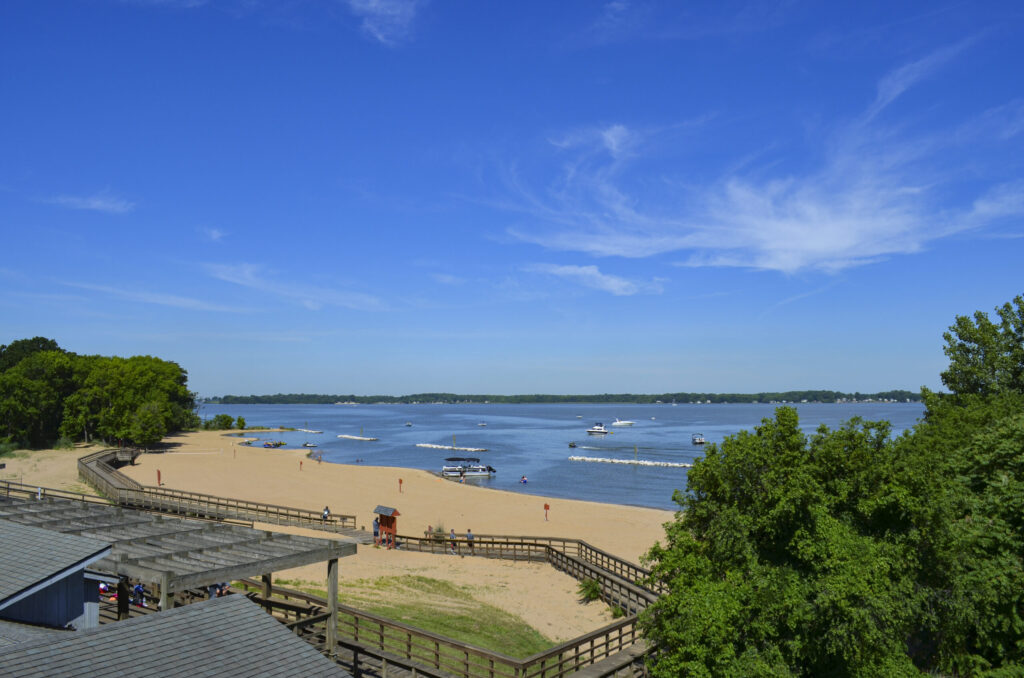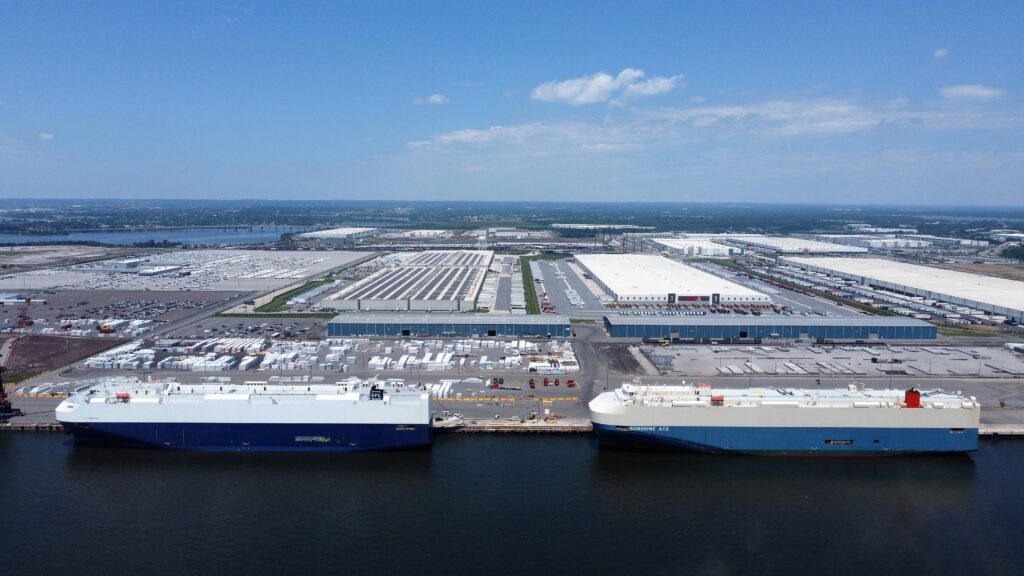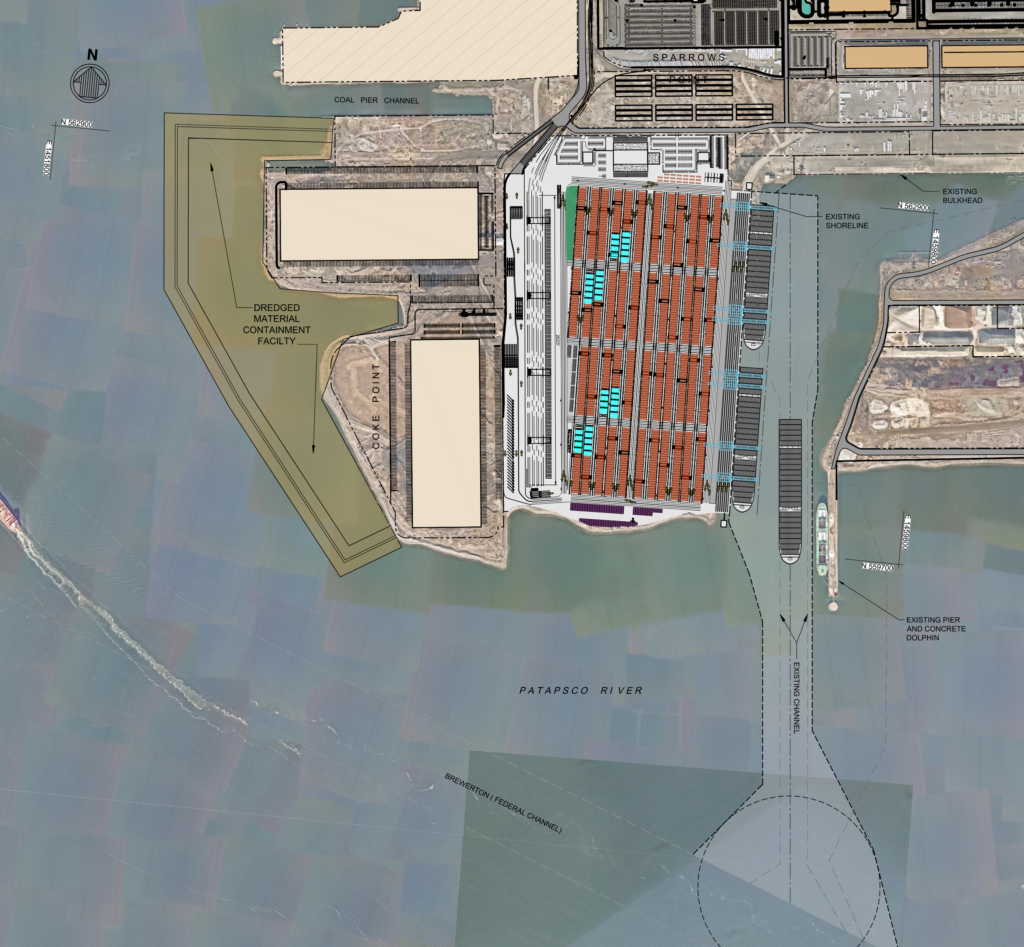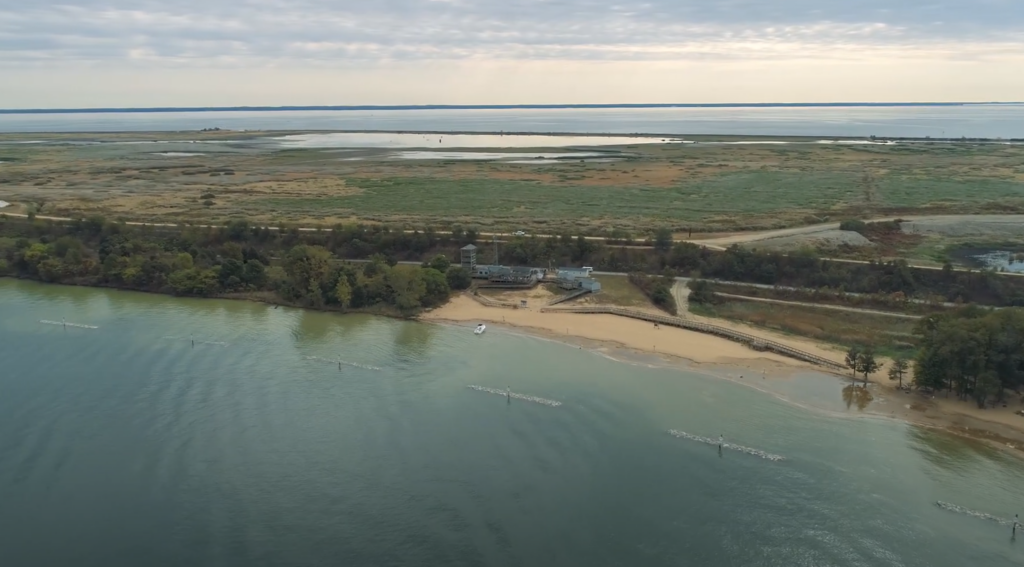Waterfront residents of southeast Baltimore County, Maryland, faced an environmental conundrum this year—and it has just been resolved in a surprise ending.
Tradepoint Atlantic, the 3,300-acre global logistics center that cleaned up and revitalized the Bethlehem Steel site, plans to build a container terminal at Sparrows Point. The roughly 3,000-foot-long wharf would come complete with cranes, a container yard, gate complex, rail yard and other structures.
The new container terminal would need dredging to widen and deepen an existing channel and turning basin and connect with another federal navigation channel, according to the U.S. Army Corps of Engineers. To handle container traffic, the channel will have to accommodate today’s Ultra Large Container Vessels. The necessary dredging would create about 4.2 million cubic yards of dredged material pulled up from the bottom of the Patapsco River.
Where could Tradepoint Atlantic put that much dredged river bottom? There are several options. For example, a Dredged Material Containment Facility (DMCF) could be constructed on the Sparrows Point property. Some of the materials could go to a long-established DMCF at Cox Creek. Some could be moved to an offshore location out in the ocean. And then there is Hart-Miller Island, a haven for wildlife that was built years ago by merging two disappearing islands using, yes, dredged material.
The island, which is home to a state park and a popular summertime raft-up spot, was created as a DMCF dating back to 1981, when a dike was built to connect Hart and Miller Islands. For 28 years, until 2009, dredged material from the Port of Baltimore was placed there. It was closed with capacity still available. The island is now 1,100 acres and is beloved for its public water access, boat-accessible beaches and trails, and birds and wildlife.

In early spring of 2024, the company approached the community to explore the idea of reopening Hart-Miller Island to accept dredged material. If approved by legislators, reopening the island for dredge spoil would come with a community benefit of $40 million from Tradepoint Atlantic. $20 million of that sum would be earmarked for Hart-Miller Island itself and the other $20 million would be split between the surrounding communities directly impacted by the dredging activities—communities like Essex, Millers Island, Bowleys Quarters, Fort Howard and Turner Station. It would have been the largest community benefit proposed for a project in Baltimore County history.
The community had a tough decision to make: Support putting more dredged materials at Hart-Miller for $40 million, or oppose the reopening of the DMCF and lose a chance at tens of millions of dollars in community improvements? The benefit would have to be decided on by the end of 2024. Baltimore County appointed a nine-member Steering Committee made up of local business owners and other community leaders to represent their neighborhoods.
It wasn’t until the steering committee called a community meeting just before they were set to vote that it became clear: a portion of the community was squarely against reopening Hart-Miller to dredge spoil.
Frank Neighoff, president of the Sparrows Point-based Chesapeake Bay Association, is on the steering committee. He tells Chesapeake Bay Magazine that of 88 community members at last week’s community meeting, 86 were against the Hart-Miller plan; two were for it.
Many expressed concern about potential impact to their waterfront homes and neighborhoods. Millers Island and Essex are closest to the site. Questions were raised about what the $20 million in community funds would be used for, and how much each community would actually get once the amount was divided up. Neighoff feels that much of the community members’ wish list for improvements (better park amenities, for example) should be the responsibility of the state and the county to fund in the first place.
When the question was asked, “What if it was $60 million instead of $40 million? What if it was $80 million?”, a community member said, “No amount of money is enough for this.”
Having heard the concerns from those attending the meeting, Neighoff planned to vote against the community benefit. “You have to do what you think is right,” Neighoff says. “We knew how many were against it and that we were going to keep fighting it.”
Two days after the community meeting, Tradepoint Atlantic reversed course. The company announced it would no longer consider Hart-Miller Island for dredged materials. The steering committee’s vote was off.
Neighoff admits he was surprised, but notes that Tradepoint Atlantic has always had a good relationship with the neighborhoods around Sparrows Point.
Speaking for the community, Neighoff says most people support Tradepoint Atlantic and the new container terminal. The terminal is expected to create 8,000 jobs and will increase the Port of Baltimore’s container handling capacity by 70 percent, according to an economic impact study. It could add an extra $1.54 billion annually in benefits to Maryland’s state economy.

Aaron Tomarchio, Executive Vice President of Corporate Affairs at Tradepoint Atlantic, says the community has been an important priority right from the start, when the company began remediating the Bethlehem Steel site 10 years ago. He tells us, “We came into being on the heels of the steel mill closing, with people reeling from loss of jobs, constant promises that were never fulfilled. We were cognizant of that… bringing our community in to have a larger discussion was a big part of our company’s process.”
That’s why Tradepoint dropped the Hart-Miller issue when it was met with resistance. “We weren’t just going to throw away 10 years of relationships and trust for this particular project,” Tomarchio says. “We are a company that’s going to be here for the long haul… we’re part of the community for the next generation.”
Tradepoint Atlantic detailed on Monday the blended approach it plans to use in choosing locations for depositing dredged material from the new container terminal. The company will use some combination of a repurposed reservoir, an existing DMCF used by the Port of Baltimore with capacity remaining, a diked infill facility created on Tradepoint’s property, and an offshore ocean deposit.

If a portion of the dredge materials go to the ocean, it would be loaded onto barges that would travel out of the Bay and deposit the materials at the Norfolk Ocean Disposal Site (NODS), a 50-square-nautical-mile USEPA-designated facility about 17 miles east of Cape Henry, Virginia.
The materials that would be dropped in the ocean have already been found to be safe for marine life in the ocean.
The National Environmental Policy Act (NEPA) environmental review process is underway for the container terminal project, and the dredge locations will be just one element in that process. Tradepoint Atlantic anticipates an Environmental Impact Statement in January 2025.
Tomarchio says as the company moves forward with its blended approach to dredge deposits, they’ll continue to engage with the public. “We’re going to be interested in what the community’s desires are and what they’d like to see. If we can be part of bringing to life some visions and ideas we want to be a part of it.”




